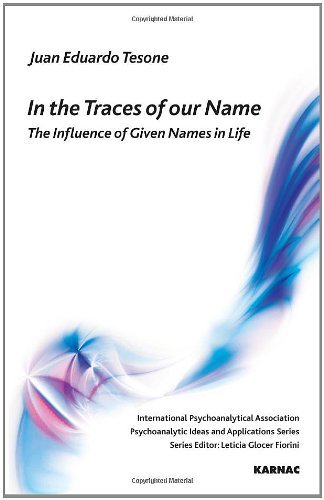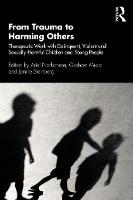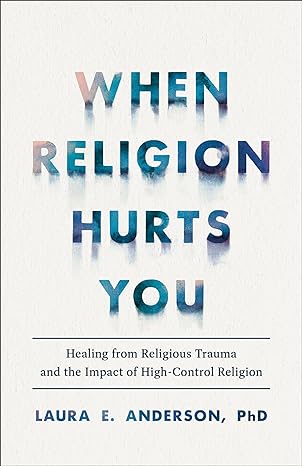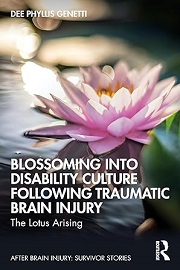Trauma and Pain Without a Subject: Disruptive Marks in the Psyche, Resignified
Part of IPA - Psychoanalytic Ideas and Applications series - more in this series
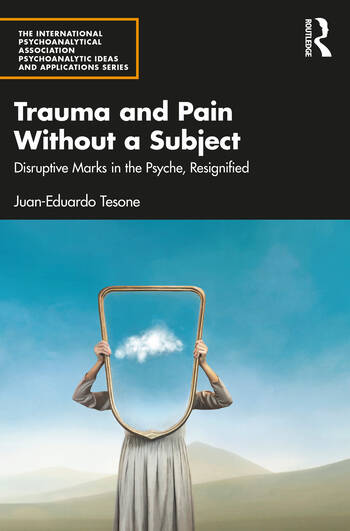
Book Details
- Publisher : Routledge
- Published : March 2024
- Cover : Paperback
- Pages : 182
- Category :
Trauma and Violence - Catalogue No : 97520
- ISBN 13 : 9781032647777
- ISBN 10 : 1032647779
Also by Juan-Eduardo Tesone
There are currently no reviews
Be the first to review
Trauma and Pain Without a Subject explores the necessity of the subject of trauma emerging, particularly when a victim has experienced but not worked through disruptive situations, in order for unconscious pain to finally be experienced.
The book is presented in three parts, with the first, Transgression and Crime, uncovering silence around the topic of incest and sexual violence within the clinic. The second part, Between Completeness and Nothingness, develops the topic of sexual violence and considers the construction of femininities and masculinities within the paradigm of a heteronormative patriarchal society, with reference to Shakespeare’s Much Ado about Nothing. The third section, “Yes, we see, but what? What we hear” explores the intimate relation between the visual and the auditory, especially in relation to hysteria.
Trauma and Pain Without a Subject will be of great interest to psychoanalysts in practice and in training, and to all psychoanalytic practitioners working with trauma.
Reviews and Endorsements
The author discusses the challenges facing a psychoanalysis that refuses to be a relic. Tesone re-thinks subjective production through the vicissitudes of the drives and their identification destiny, in a trajectory from indiscrimination to the acceptance of otherness and subjective evolution. How can we produce theoretical thinking anchored in clinical experience and capable of fighting dogmatism? How do we consider the complexity of the subject, which oscillates between the redundant and the unpredictable, between repetition and novelty? These questions permeate his book. It provokes enthusiasm because it dares to be open while also based on experience. A book that invites a dialogue. It has brought me to re-think notions I thought definitive. For this I am grateful and recommend it.
Dr. Luis Horstein, Physician and psychoanalyst, President of FUNDEP (Foundation for Psychoanalytic Studies)
The author highlights two poles that structure the traumatic: the existence of the other and the subject’s own sexuality. He emphasizes the specific in what is Disruptive, the Traumatic, and Symbolization: a total lack of representation, a black hole of the psyche. He alerts us to the excess of binding as the antithesis of chaos, which is the basis of psychic change. In this sense, psychoanalysis is called upon to work through the tension between the sexes of the phallic order and the ‘nothing’ order, generating idiosyncratic representations and overcoming the cisgender product of thwarting binarism. In this set of psychoanalytic texts, Tesone gives us a creative, in-depth discussion of the vicissitudes of the body.
Moty Benyakar, Physician, psychiatrist, and Full Member of the Israeli Psychoanalytic Society; Professor Emeritus of the USAL, M.D., Ph.D., Director of the Contemporary Psychoanalysis and the Disruptive Committee in the doctoral program in Psychology of the USAL; Full Member of the Argentine Psychoanalytic Association and of the International Psychoanalytical Association
Table of Contents
Part I – Transgression and crime
1. Incests and transgression of the narcissistic taboo
2. Incest is not the Oedipus
3. From the theory of seduction to traumatic seduction
4. In-cestus: from disavowal to revelation
5. Dominique, incest in the folds of the name or ig-nominia
6. A pain without a subject
Part II – Between completeness and nothingness
7. Could what they say be true?
8. The importance of the No in the prevention of sexual violence against children and adolescents
9. Femicide and orphanhood
10. The divine jouissance, the feminine position and the mystics
11. Masculinities in checkmated?
12. The tattoo and the shield of Perseus
13. William, did you say, “Much Ado about Nothing”?
Part III – Yes, we see, but what? What we hear
14. Hysteria’s contribution to subjectivity
15. "Sexes and Genders"
16. Cumulative trauma and “troumatique”
17. Viability of Psychic Change
18. What hurts you?
19. Transformations of the formless: Painting and psychoanalysis
20. Commemorating, remembering, forgetting
Customer Reviews
Our customers have not yet reviewed this title. Be the first add your own review for this title.
You may also like
From Trauma to Harming Others: Therapeutic Work with Delinquent, Violent and...
Ariel Nathanson
Price £25.19
save £2.80
When Religion Hurts You - Healing from Religious Trauma and the Impact of...
Laura E. Anderson
Price £16.99
Blossoming Into Disability Culture Following Traumatic Brain Injury: The Lotus...
Dee Phyllis Genetti
Price £19.99


